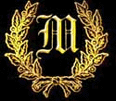
NFL Quarterback Passer Rating
It's math! Really tedious math! Sweet!
by Dave McAwesomeI am consumed by many questions. How is it possible for physicists to make use of string theory, a theory marked by the existence of many dimensions, when we are limited by three dimensional space? Do all semantic frameworks share a few fundamental rules, such as the minimal principle of non-contradiction? How did Hostess first calculate the precise amount of cream filling to make their Twinkies so delicious?
Today, I am primarily concerned with something I can actually answer. "How the hell do you calculate the NFL quarterback rating?"
With patience. Much patience. The NFL quarterback rating system is the brainchild of Buford Munch, who, in the autumn of 1972, produced a garish equation of such arrogance and irritation that the recently formed No Fun League couldnít resist its adoptance. It is rumored that Munch liked no one and possessed an acrid animosity towards every living creature--marginally toward kittens, but especially toward sports writers. In this spirit, or lack thereof, he concocted the quarterback rating system and kept its formula a highly guarded secret. Newspapers around the country paid him a royalty to print his patented statistic. He made a handsome fortune--squandered, alas, in soy bean futures whose value bottomed out in the early 90s when America remembered it really liked meat no matter how difficult the task in digesting a Big Mac.
That story, of course, like those found in American History textbooks, is false. Buford Munch did not invent the quarterback rating system, he adored kittens, and America bombed Hiroshima not to win World War II, but to fire the first shot in the Cold War.
On a happier note, the NFL quarterback rating equation is a five part equation as follows.
A = (comp. % - 30) / 20
B = (avg. gain - 3) / 4
C = TD% / 5
D = (9.5 - Int %) / 4
QB rating = ((A+B+C+D) / 6)*100
If that isnít enough, and it isnít, keep in mind that the highest possible score is 158.3--a nice round number. Furthermore, A, B, C, or D cannot be less than zero or larger than 2.375. Raise or lower the component to meet the limit.
What is the ideal quarterback? According to this tedious statistic, the uber-back must have a 77.5 completion percentage, average 12.5 yards per pass attempt, throw 11.875 touchdowns out of every hundred pass attempts, and throw zero interceptions. No problem, said the hare to the tortoise.
















